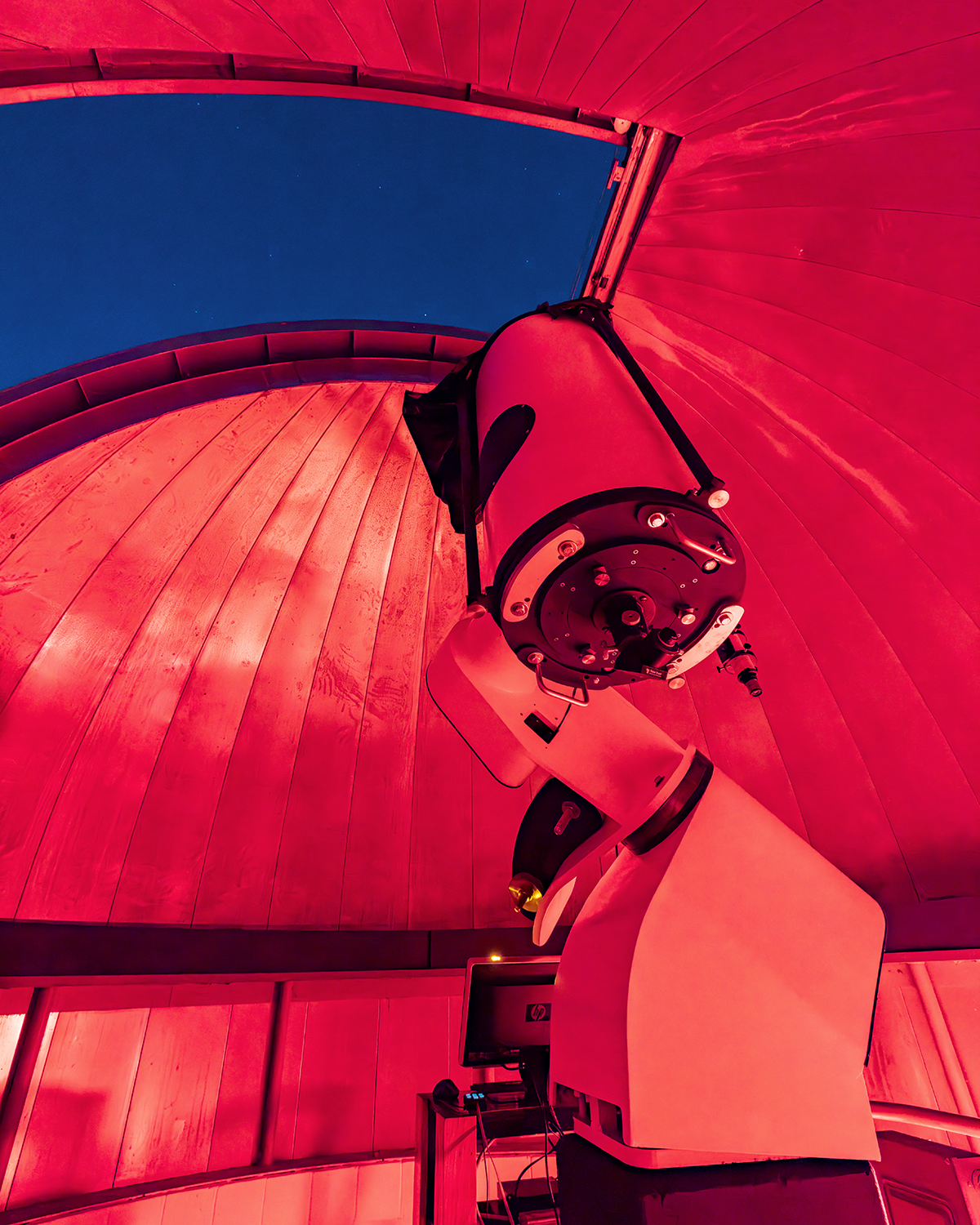
Star Power
✴
A team of employees, students, researchers, an alum, and an elite telescope builder brought this important piece of research equipment and UConn history back to life.

By Elaina Hancock ’09 MS and Lisa Stiepock
Photos by Milton Levin ’04 Ph.D.

The late Cynthia Peterson, who became the first woman on the UConn physics faculty in 1968 and spent 49 years there, was known for her passion for teaching and outreach, her generous sharing of knowledge, and — perhaps most significantly — for her dogged campaign to build an observatory in Storrs, a pursuit that succeeded in 1979 with the unveiling of the East Road Observatory.
It took a decade of persistent lobbying, planning, and building by Peterson and machinist Richard Mindek. Peterson started the process as soon as she was hired and, five years later, the University agreed to match any grant money she could get from the National Science Foundation. A year later the NSF gave her nearly $15,000 and the University kept its promise.
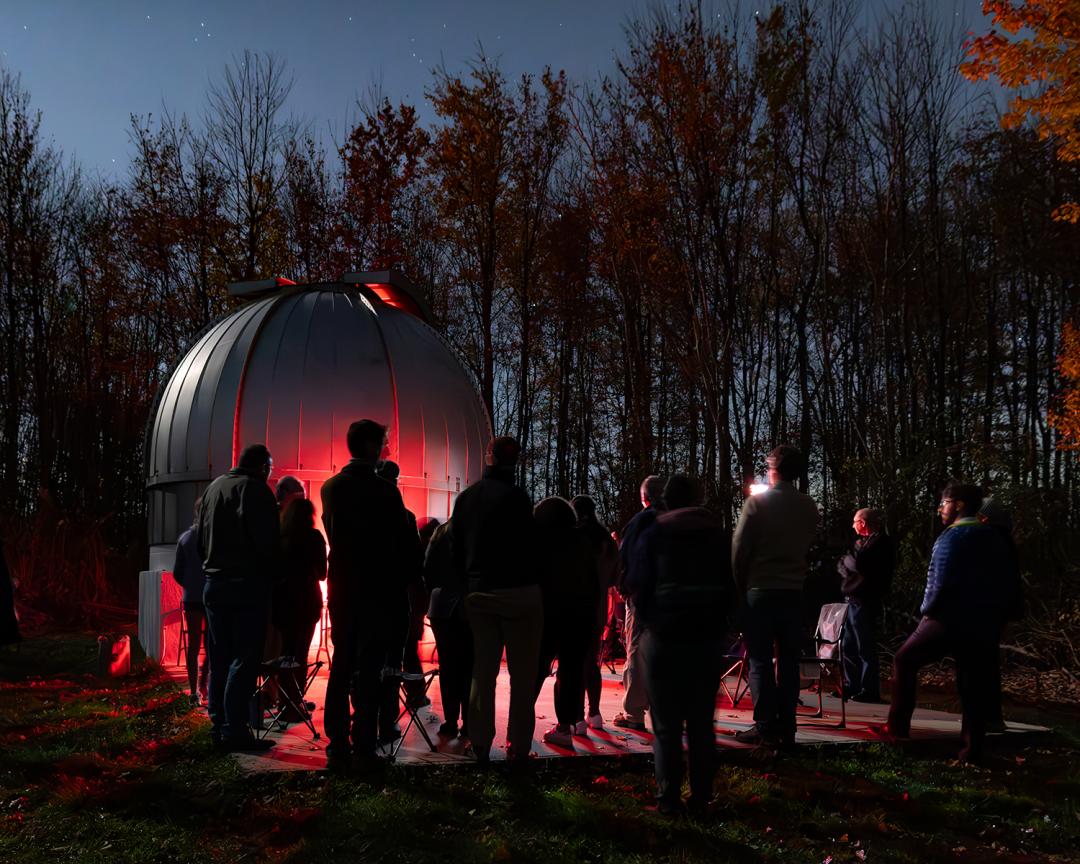
✴
Among the next-up goals for the team is securing funding to repair an overgrown and decrepit access road to the observatory. For now, astronomy students will be treated to occasional star parties. Eventually the hope is to once again open the observatory to the community.
When the observatory became fully functional in January 1980, The Hartford Courant reported that, through their new telescope, astronomy students could see the moons of Jupiter, Saturn, and Mars, the planets of Neptune and Pluto, and — weather permitting — details on the surface of Mars and Jupiter.
The East Road Observatory saw a few decades of enthusiastic use by students, professors, and plenty of girl and boy scouts before it fell out of repair around the turn of the century and was largely forgotten. Then, in the fall of 2022, it entered the orbit of UConn physics professor Matthew Guthrie.
“When I learned that it was no longer in use, I asked around to see why and how we could get it up and running again. Getting it fixed up was not in my skill set, so I didn’t think too much more about it,” says Guthrie. “Then Allen Hall, a local award-winning telescope designer, emailed our department chair out of the blue in January. He wanted to donate a telescope that he built. We connected and I told him about the derelict observatory. About a week later we were taking it apart.”
Guthrie says the facility was in rough shape, and Hall admits he thought it was a lost cause, but they stuck with it. Finding Hall was haystack-needle-level luck says Guthrie. “His mechanical and technical skills are exactly what we needed to get this place restored to its former glory, and given the work and upgrades we’ve already made, they’re even better than the original design.”
The two had lots of help from staff, students, researchers, and, especially, one particular alum. Dennis Perlot ’82 (ENG) was there the April day they found the observatory’s logbook with the last, ominous 2009 entry that read, “Dome stuck, shutters frozen.” As an undergrad he took astronomy with “Doc Peterson.” When his then 11-year-old son took a UConn summer science class a few years ago, says Perlot, “guess who his instructor was? Cynthia!”
By late October last year, after months of repairs, troubleshooting, and cleaning out critters and junk, the observatory was back in action. Channeling Peterson’s spirit, Guthrie, Perlot, and Hall had persevered.
✴
Finding Hall was haystack- needle-level luck
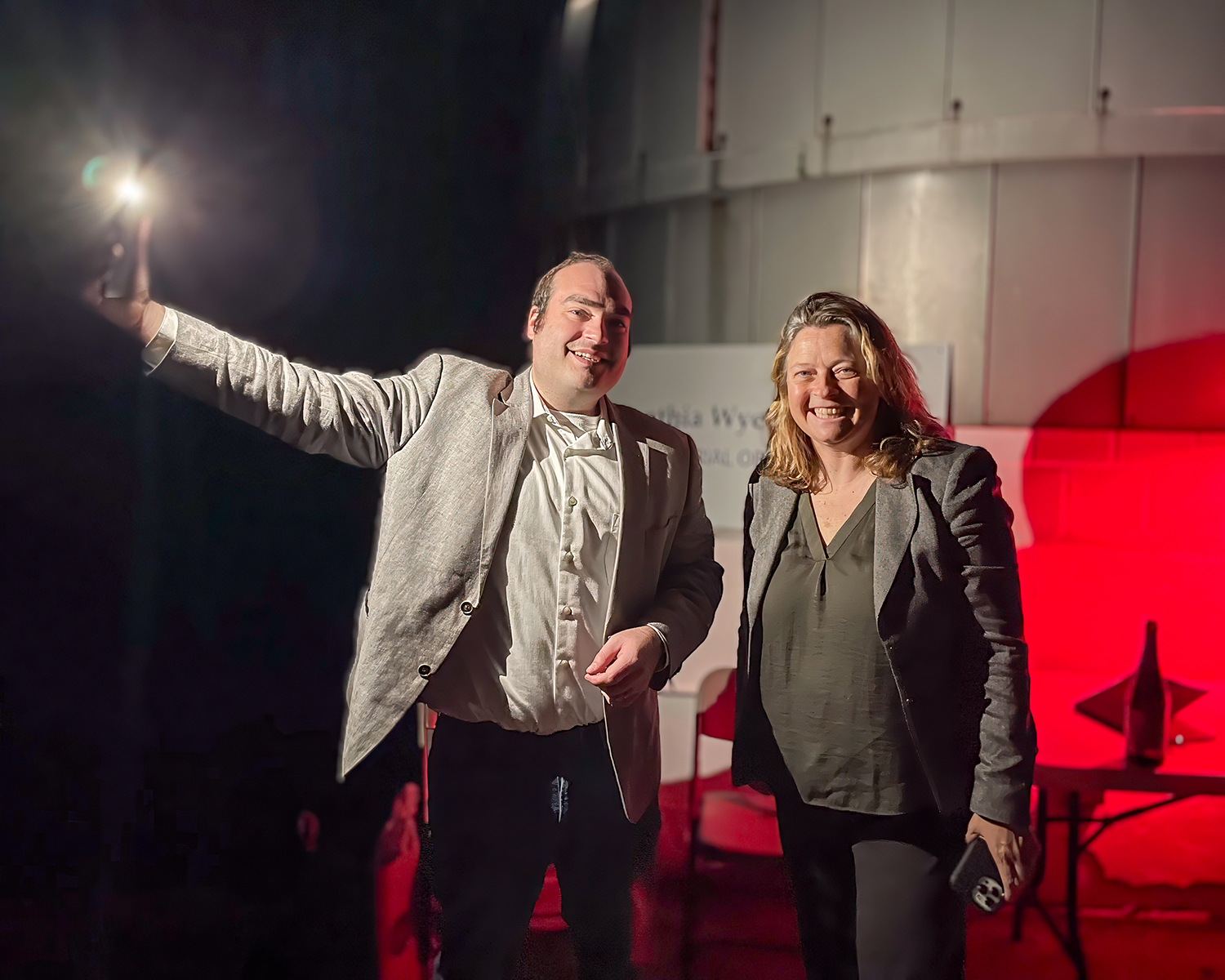
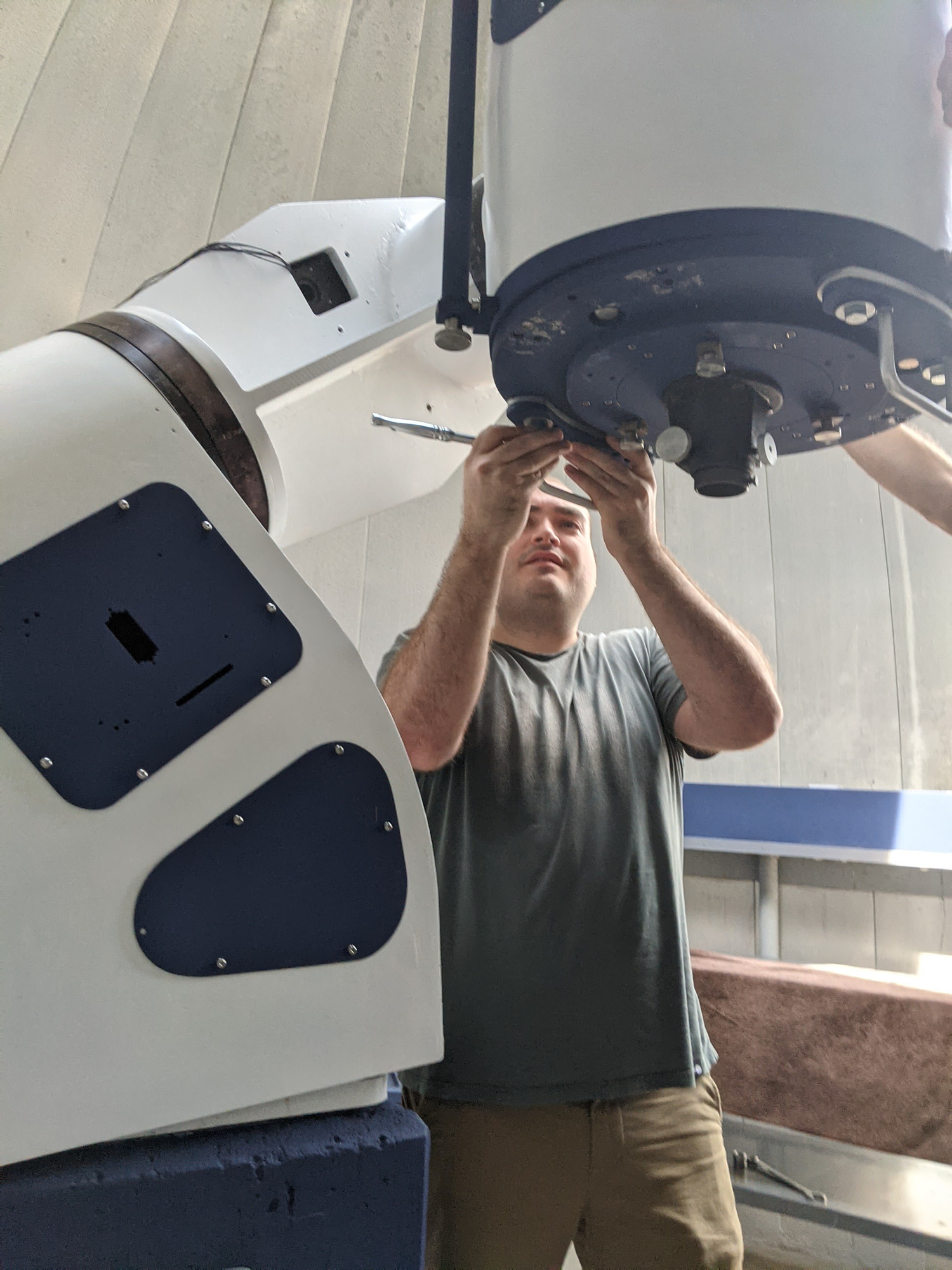

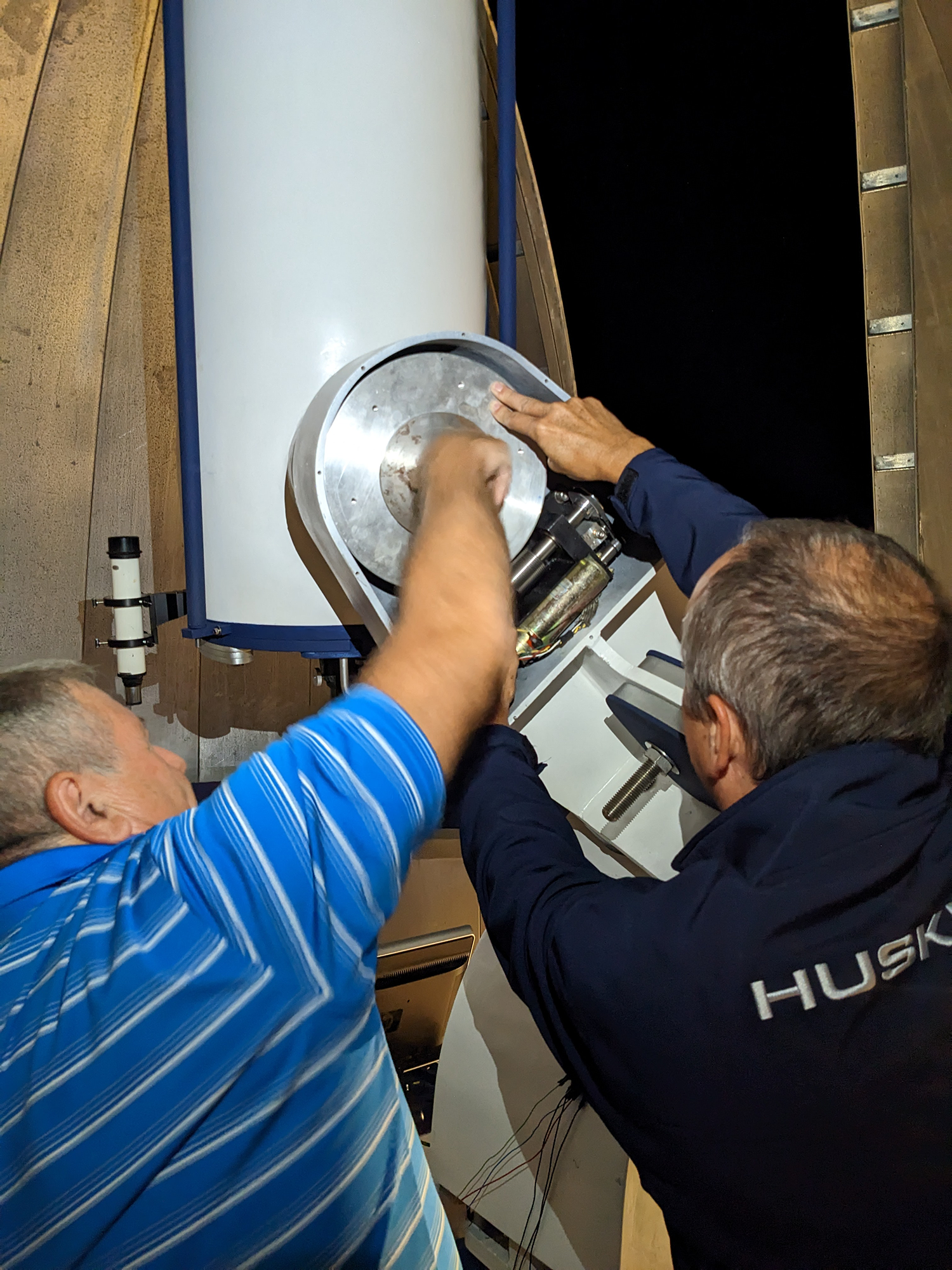
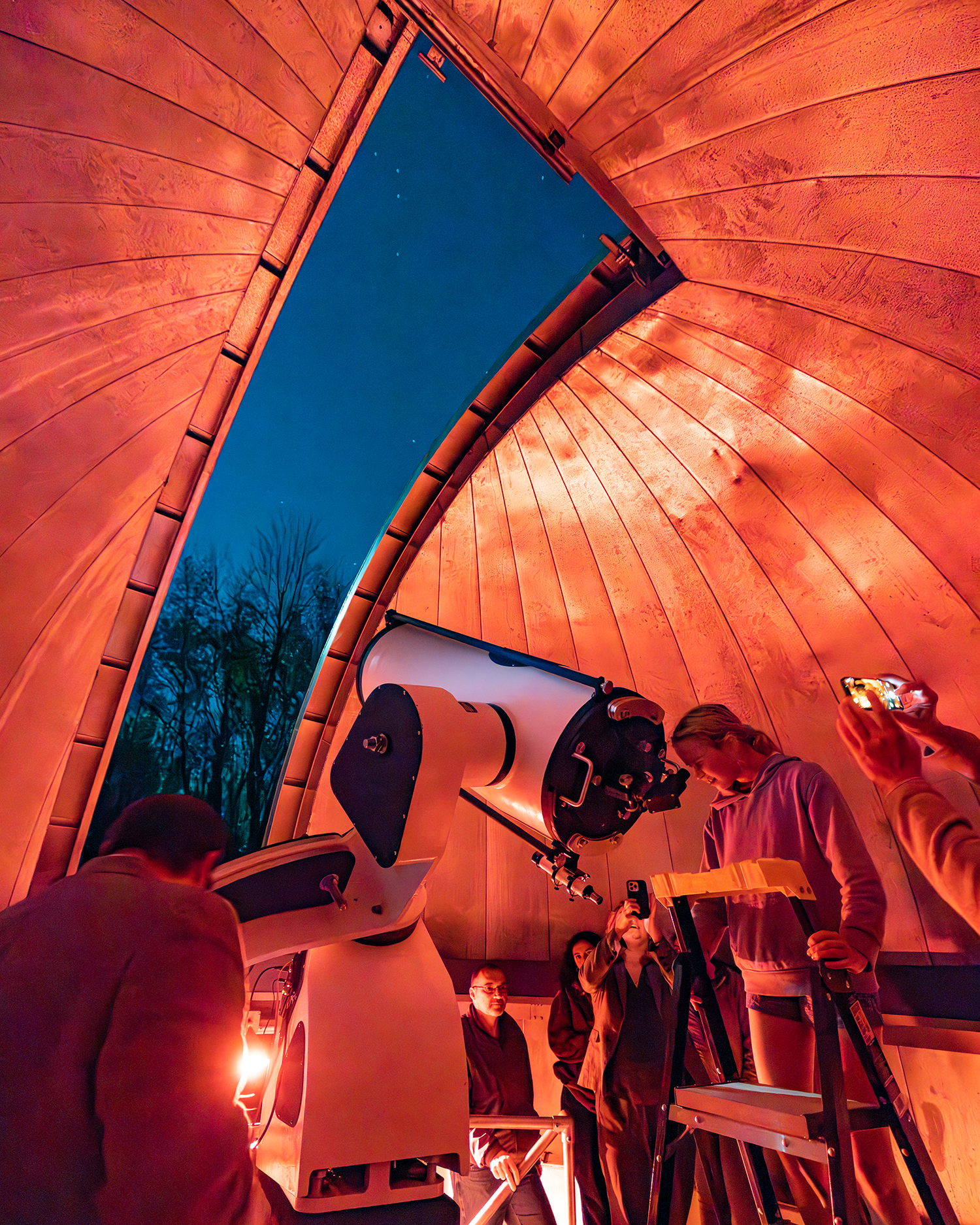
✴
Thousands of volunteer hours last spring, summer, and fall led to this October reopening of the old East Road Observatory, inoperable since the mid-’90s. A lion’s share of the work was done by Guthrie, Perlot, and Hall. “We just had the time and the ability to dedicate to it,” says Guthrie, adding they were inspired by Cynthia Peterson, the astronomy professor whose decade of diligence built it in the ’70s. Her daughter, Celeste, and grandaughters celebrated the reopening with the team by planet gazing through the refurbished scope.
Clockwise from top: Guthrie and Celeste; Perlot and Hall; one of Peterson's grandaughters; Guthrie; Hall.
From top: Guthrie and Celeste; Guthrie; Hall; Perlot and Hall; one of Peterson's grandaughters.
✴
“This will be a force for good”
“Getting the facility back up and running has been an amazing and rewarding experience. This will be a force for good in the department and at the University,” says Guthrie. “Our department has big-shot astrophysicists who work on JWST [James Webb Space Telescope] and Hubble. They like their telescopes to be in space, but having a telescope here is a powerful thing.”
UConn researchers have access to a network of telescopes around the world, but now, once again, students and researchers can get hands-on experience with an earth-bound scope right here in Storrs. “There’s nothing more fun than going through the theory in class and then seeing what it looks like with your own eyes and making that connection,” says Guthrie, “That’s one of my basic philosophies of being a teacher, you can do all the theory that you want, and you probably can be pretty good at it. But if you can’t apply it, and see what that theory does in real applications, there’s no point. Things like this observatory are great tools for building that perspective.”
Upgrades have enabled research the observatory was previously not capable of, and Guthrie hopes to set up the system so it can be controlled remotely and, eventually, project images to a live screen at the campus planetarium (now under renovation).
“With tracking, the scope rotates just a little bit at a constant rate to track along with the motion of the stars and that lets us do real science because you must look at something for a long time to really study it. One of the things that we’re excited to do is exoplanet studies, where you need to take a few hours of exposure to accurately measure how much light you’re getting from the star so that any variability in that light you can attribute to a planet passing between us and the star. Doing that requires accurate tracking.”
It was at sunset on October 24 last year that the team fired up the new 16-inch telescope and explored deep sky objects, planets, even the Apollo 15 landing site. They are working on giving the building they were in a new name: The Cynthia Wyeth Peterson Memorial Observatory.
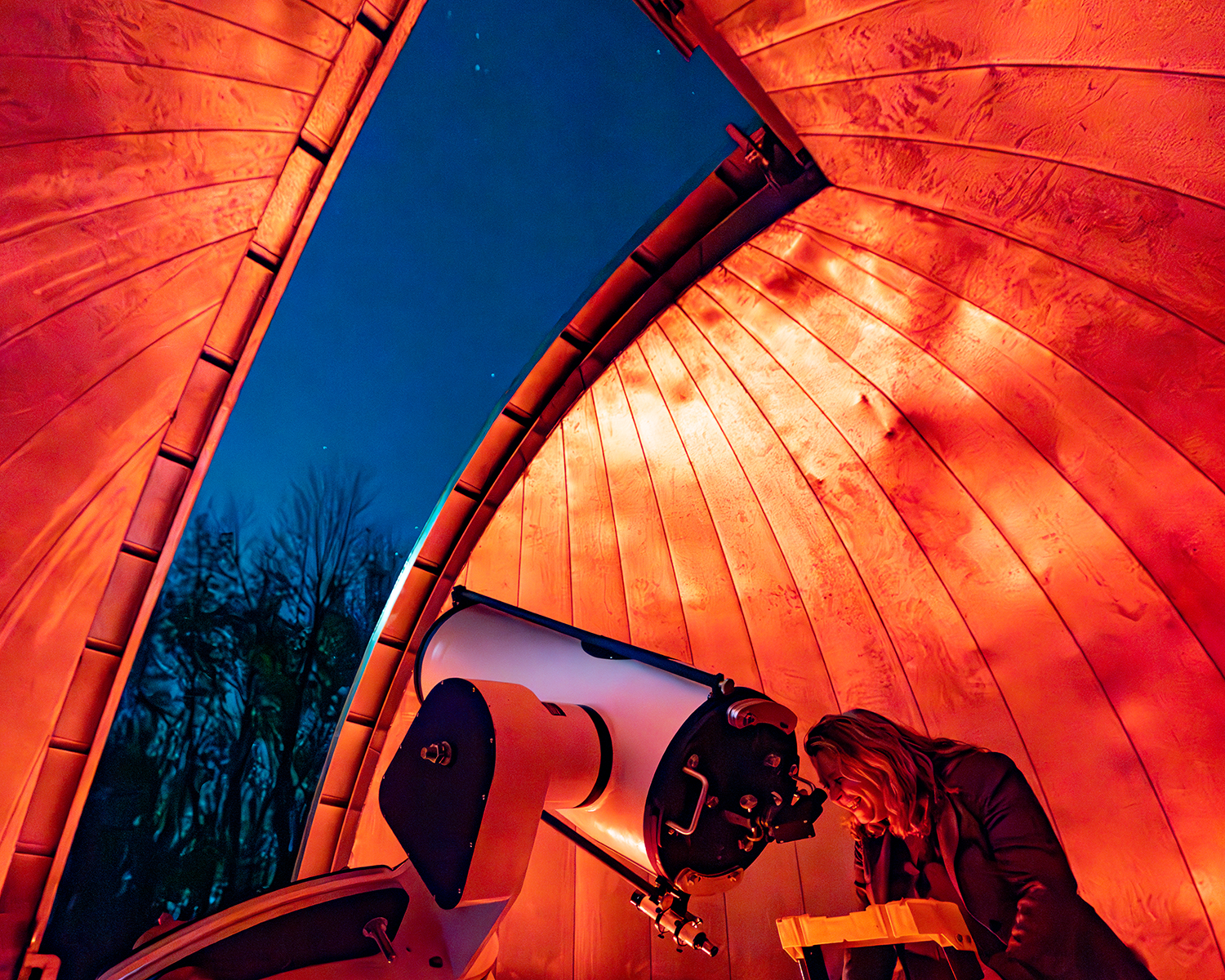
✴
Celeste Peterson looks through the rebuilt telescope — lens trained on Saturn — for the first time. A biology professor at Suffolk University in Boston, Cynthia’s daughter has been sifting through her mom’s papers, working with Guthrie on a memorial in Gant Science Complex.

I was a grad student at UConn from 1974-1977. It does my heart good to see the observatory up and running again. Well done! It will undoubtedly improve the science experience for generations to come.
Great piece! I took Cynthia’s astronomy class close to the tail end of her time at UCONN, very cool to learn about her effort to have this observatory built and it was a nice touch to include her daughter as well. As a stargazer, I hope that one day they open the observatory up for sessions with the local community.
In March of 1970 I was a freshman taking the astronomy course with Dr. Peterson when she organized a pre-dawn class to observe bright comet Bennett, for which we had to climb to the roof of the physics building to use the 6″ (?) refractor for comet head detail observing. Already Dr. Peterson was talking about her early efforts to get UConn a “real” observatory. Some years later I read about the new facility opening and how proud she was that her long-time project had finally come to fruition. A few years later I was invited to give a short talk by the music department so I contacted her about my trip and she arranged a short day trip to show me the new observatory. I’m so very happy that everything’s back up and running once again, and naming the observatory for her is the perfect tribute to Dr. Peterson’s determination to get this facility funded and built. I hope to read an announcement of the official re-naming soon!
I am a retired UConn Professor of English who has lived at 12 Hillcrest Drive in Storrs, around the corner from East Road, since 1984. I often walk up East Road and have been very curious about it for many years. I’m so happy that it’s been repaired and in use again. In future years I hope it is open to visit by school kids in Mansfield and by the general public. It’s a real credit to UConn, in my opinion, increasing its available academic resources considerably!
This makes my heart happy!!
While living in the Alumni Quad, (Belden Hall) my roommate used to get up at 6am everyday to go to view the stars through the telescope. He used to always ask me if I wanted to go with him but the idea of getting up that early and walking across campus just to look through a telescope I thought was insane. Now looking back at my four years at UConn, one of my biggest regrets is not going with him one morning to view the skies from that telescope.
Wonderful story. Congrats on the observatory
The story of the now-functional telescope at Storrs is enlightening. I am a senior citizen alumnus living in Vernon, CT. Will the telescope be available for public viewing? Or, perhaps, could a graduate attend a 101 course in astronomy that utilizes the telescope as part of the course?
Yes, the hope is to continue work so that there can be public star parties. There also is hope for live feeds from the observatory to the currently-under-renovations planetarium, located on campus. Both things await proper funding. We are putting you in touch via email with people who can provide you with all the options for continued learning.
I am a semi-retired professor who took my astronomy course at UConn just prior to Dr. Peterson’s arrival and was seriously considering astronomy (now a hobby) as a career. But, there were no women in the department, and I had only a male lab assistant who knew one word in English, “star, star” as he jabbed at a sky map. Women were neglected or unwelcome, so, I chose another “A”, anthropology. But, now, who know who will go through those doors?
Great accomplishment and congrats to the team for successfully reinstating the observatory. Curious to know if the observatory will be hosting any events open to public, just like the one at Wesleyan University in Middletown? Any special event planned at the time of total solar eclipse on Monday April 8th?